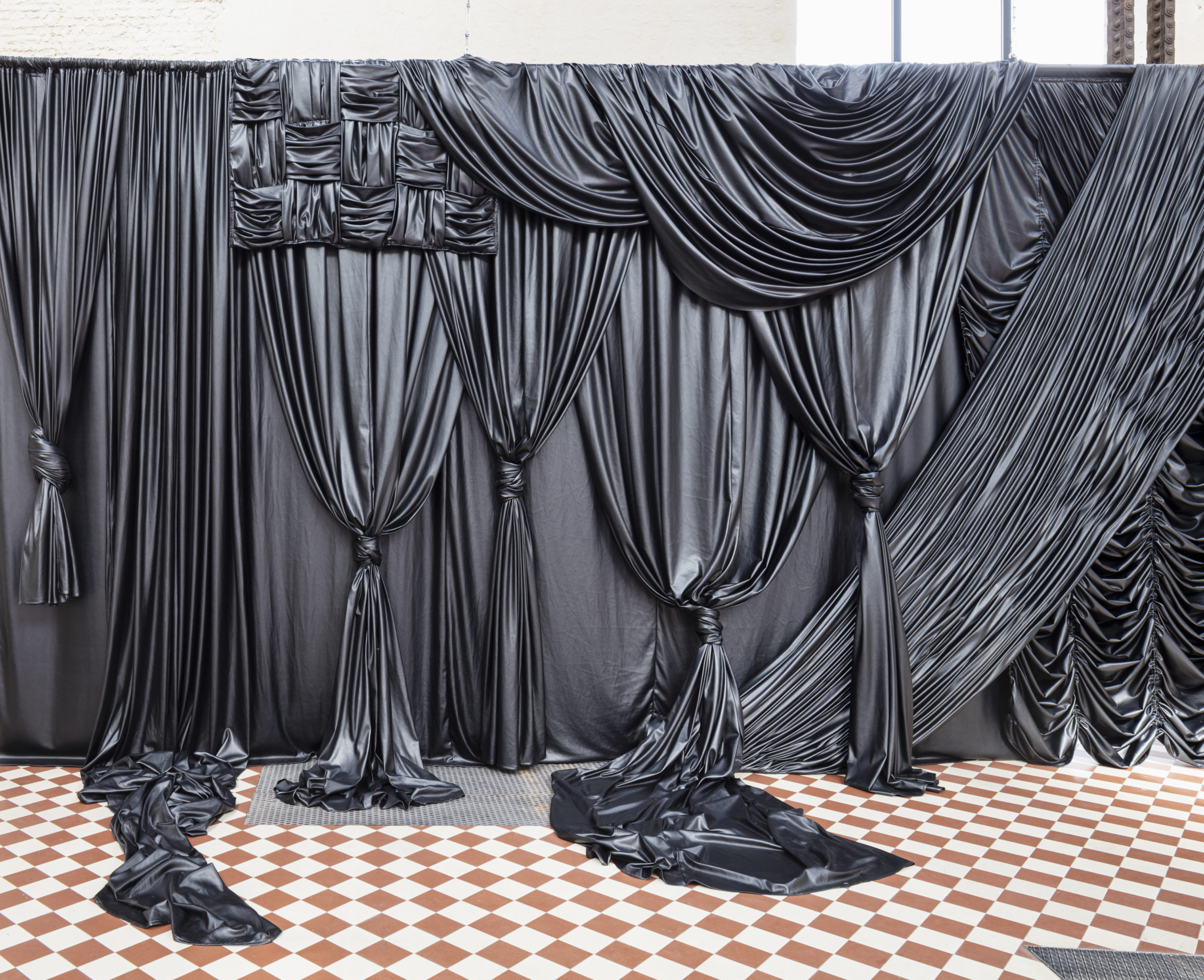
Jardin d’Hiver #3. DECORAMA
Bringing together work by ten visual artists employing ornamentation and decoration to challenge concepts of taste, class and gender, the exhibition springs from Vaud’s long tradition of developing the decorative and applied arts.
While today ornamentation is recognized as a marker of humanity, its value is still the subject of lively debates. As far back as Plato and Aristotle, ornamentation was first condemned and then rehabilitated. Whether considered a useless simulacrum or a symbol of the divine and vector of knowledge, the question of ornamentation has always been closely linked to considerations of function and beauty. For centuries, it was assigned a moral function, and craftspersons, artists and citizens in general conformed to the reigning decorative regimes out of respect for the dominant social and religious hierarchy.
Starting with the advent of modernism in the twentieth century, ornamentation was considered merely decorative and thus invalid, and often mocked in the functionalist and elitist discourses of architects such as Le Corbusier and Adolph Loos and painters like Kandinsky and Mondrian. Industrialization and mechanical reproduction allowed patterns and such to be cloned at will, relegating craftsmanship to the ranks of the so-called “minor arts”.
The question of ornamentation quickly led to assertions about its alleged relationship with gender identity (and/or sexual orientation). Thus associated with “femininity”, adornment, was considered unseemingly frivolous, excessive and even abominable. Since the rise of postmodernism, ornamentation has regained a canonical place in the so-called “major” arts. But whether overtly or not, in reality it has always been present in art, and it continues to be employed (and openly advocated) as a formal strategy for conceptual and even political purposes. This DECORAMA exhibition brings together artists whose practice uses ornamentation and decoration as tools to interrogate issues of taste, class and gender. While it may seem speculative to gather together such diverse practices on a geographical basis, this exhibition is a continuation of the long-standing Vaud tradition of valuing and developing the decorative and applied arts.
Curator of the exhibition: Elise Lammer
Publication: The exhibition will be accompanied by the third issue of the ‘Jardin d’hiver’ series.
Pauline Boudry & Renate Lorenz, "Curtain Piece" (disobedient), 2023. Faux leather installation, approx. 400 x 1200 cm. © Pauline Boudry & Renate Lorenz. Photo credit: Michiel de Cleene
Featuring works by
Elie Autin
Caroline Bachmann
Pauline Boudry & Renate Lorenz
Marc Camille Chaimowicz
Sebastián Dávila
Sarah Margnetti
Julie Monot
Stéphane Nabil Petitmermet
Guillaume Pilet
The format «Jardin d’Hiver»
Each edition of the biennial will be awarded to an external curator in an open competition, the aim being not only to support the region’s artists and raise their profile by displaying their work, but also to bring new perspectives to bear on the local art scene by welcoming external experts to MCBA.
Throughout the museum’s history, its dialogue with artists living and working in the canton has taken a range of approaches in terms of acquisitions and exhibitions. The latter have included both solo and group shows bringing together established and emerging artists. MCBA continues to promote the local contemporary art scene in a regular programme of events: Jardin d’Hiver builds on the earlier programmes Rencontre avec… (1972-1982), Regards sur le présent (1982-1990), Échanges d’espaces (1994-1995), Préludes and Perspectives romandes (1995-1999), as well as Accrochage [Vaud] (2003-2016).
Partner
Sarah Margnetti’s wallpaper is co-published with Wallpapers by Artists
